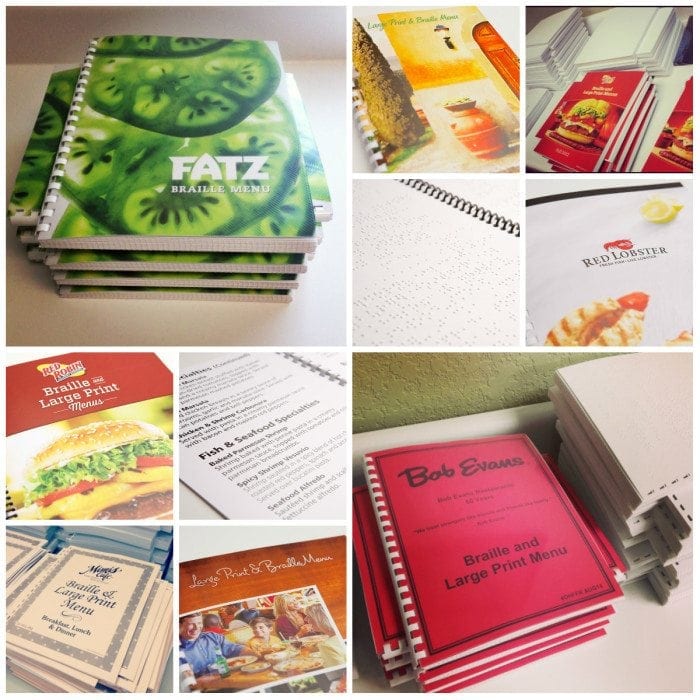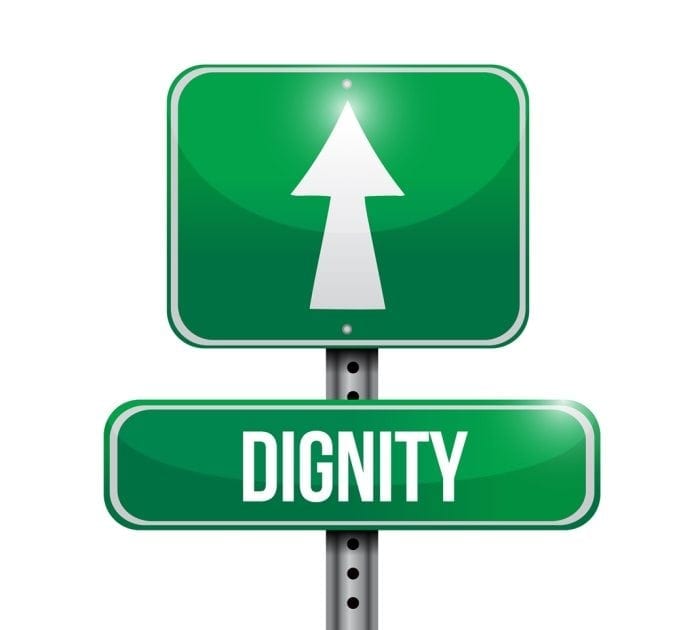Braille and Large Print Menus Bring Dining with Dignity
Published on
Imagine
You’ve just received a promotion. This is cause for a celebration so your boss and colleagues decide to take you out to lunch. You arrive at the restaurant and everyone receives a menu. As the server finishes taking your beverage order, your boss asks for everyone’s attention because she wants to make an announcement. She begins talking about you and your professional accomplishments. Then she discusses what impresses her most about you; your independence. She explains how you independently manage all of your clients and perform at a level above most people with the same experience. You’re humbled. You thank your boss and shake your colleagues’ hands.
Then, the server returns to the table to take everyone’s order. You sit in your seat replaying the words your boss just said. The word “independent” circles in your mind; you’re blind and at this very moment you are dependent on another person to read your menu. The quality your boss finds most impressive—independence—isn’t an option in this situation.
Rewind
You arrive at the restaurant and everyone receives a menu. You ask the hostess if they have braille and large print menus. They do and she brings one to you. Your boss shares the same praise as above. When the server returns to the table, you’ve had time to review the menu while still being part of the table’s conversation. You were able to place your order with independence.
Solution
Provide braille and large print menus. These menus allow your patrons with visual disabilities to maintain their independence and dignity. Not only will you gain the loyalty of people with visual impairments and blindness, but their family, friends, and patrons at neighboring tables will take notice of your proactive accessibility efforts and be more likely to return to your establishment, too.
This is especially important because millennials value socially responsible brands. “A brand’s ethics and social responsibility can influence purchasing decisions and loyalty for many millennials—a generation transitioning into their prime spending years.”

Facts
Did you know…?
- The World Health Organization (WHO) estimates that 1.3 billion people in the world have a visual impairment even with corrective lenses. Of those, 36 million people are blind, 217 million people have moderate to severe distance vision impairment, and 826 million have a near vision impairment.
- According to the 2017 National Health Interview Survey, 26.9 million Americans aged 18 years and older experience significant visual impairment even when wearing corrective lenses. Of these, 7.8 million Americans are 65 and older.
- The number of people with visual disabilities rises sharply by age. In fact, people over the age of 50 make up the majority of people with visual impairments. So, with baby boomers reaching age 65 and the United States median age increasing, more of the American population is expected to face visual impairments that require accessible documents.
Make a Difference with Braille and Large Print Menus
There’s no question that your restaurant needs to offer braille and large print menus. With millions of American’s having a visual disability and millions more expected to soon, you’ll have people who’ll be grateful for these menus. You’ll provide dignity, an opportunity for independence, and stellar customer service.
Categorized in: Accessibility, Informational, Opinion, Restaurants
This post was written by



Comments are closed here.